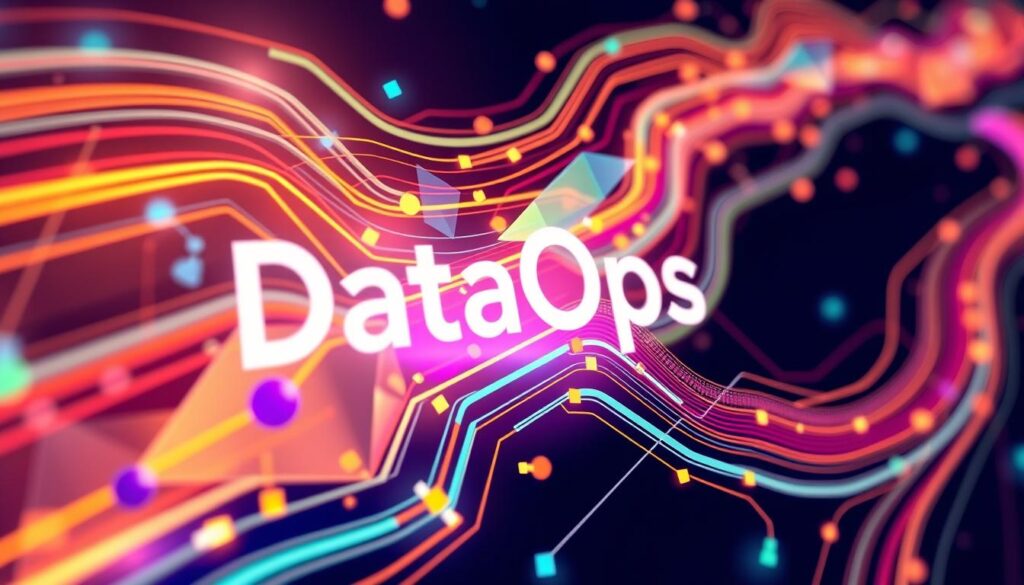“Data Discovery To Data Pipeline Process“Ever felt overwhelmed by the huge amounts of data your company makes? Imagine terabytes of info spread across databases, each full of insights that could change your business plan. The first step to turning raw data into useful knowledge is data discovery.
In today’s digital world, data discovery is essential, not just nice to have. With many data integration challenges, it’s key to turn different data sources into useful insights. A huge 86% of companies face tough data integration issues, making the data discovery to pipeline process even more important.
Think about unlocking your data’s hidden potential. Using good data discovery methods can cut down on delays, lower data risks, and help make better decisions. Today, businesses see data as a valuable asset, not just info.
The journey from data discovery to strong data pipelines takes careful steps. Tools like DataSunrise help with this, working with platforms like Snowflake and Amazon Redshift. Your data is now a chance to grow, not a problem.
In this article, you’ll find out how to improve your data discovery, create strong data pipelines, and use your company’s data to its fullest. Let’s start this exciting journey together.
Understanding Data Discovery Fundamentals
Data discovery is key for companies in today’s data world. With so much data being made every day, finding and using it well is crucial.

Learning about data discovery shows its big impact on businesses. It helps them find useful insights. Data profiling is a big part of this, helping companies know what their data is like.
Types of Data Discovery Methods
There are many ways to find data:
- Manual exploration of datasets
- Automated data scanning techniques
- Machine learning-powered discovery tools
- Predictive analytics platforms
Key Components of Data Discovery
Good data discovery needs a few important parts:
- Data identification: Finding the right data sources
- Data cleansing: Fixing errors and making data clean
- Sorting data types and attributes
- Doing a deep analysis of the data
Benefits of Effective Data Discovery
Using strong data discovery methods brings big benefits:
- Better decision-making
- Higher quality and reliable data
- More efficient operations
- Deeper understanding of data connections
With 67% of companies facing data quality issues, knowing data discovery is vital. Using advanced data profiling and cleaning can turn raw data into valuable insights.
The Role of DataOps in Modern Data Management

DataOps is key in changing how companies handle their data. It’s a strategy that connects data finding and pipeline making. It aims to improve data quality, reliability, and access.
DataOps combines people, processes, and tech for better data. Your company can gain many benefits from this:
- Faster data delivery and insights
- Improved teamwork in data teams
- Better data transformation
- Strong data governance
Setting up DataOps includes important parts for top-notch data management:
| DataOps Component | Key Focus |
|---|---|
| Continuous Integration | Automated data pipeline development |
| Data Observability | Real-time monitoring and quality tracking |
| Automated Orchestration | Streamlined data workflow management |
With DataOps, you can cut down on data pipeline upkeep time. It also boosts data infrastructure efficiency. The method supports both batch and real-time data processing. This lets your company make quicker, smarter choices.
Companies using DataOps see big wins. They get better data quality, lower costs, and better teamwork among data experts and IT folks.
Enhancing Business Intelligence Through Data Discovery
Data discovery turns raw data into valuable insights. It helps your business by using data visualization, advanced analytics, and real-time processing. This way, you can unlock a lot of value.
Today’s businesses struggle with managing data. About 80% to 90% of data is unstructured, making it hard to extract value. Data discovery is a smart way to tackle these challenges.
Data Visualization Techniques
Data visualization makes complex data easy to understand. Important strategies include:
- Interactive dashboards
- Heat maps
- Comparative charts
- Geographical representations
Advanced Analytics Integration
Adding advanced analytics to your ETL (extract, transform, load) processes gives deeper insights. Good data quality is key here. It ensures your predictive models are accurate and useful.
Real-time Data Processing
Real-time data processing lets businesses make quick decisions. Using advanced data discovery tools can cut down on inefficiencies by up to 40%. It also gives you a competitive edge.
Companies using advanced data discovery tools see a 35% boost in predictive capabilities. This shows how vital modern business intelligence strategies are.
Data Discovery to Data Pipeline Process
Turning raw data into a structured pipeline is key for today’s businesses. Your data discovery process shines when it’s guided by smart data loading and warehousing. Handling big data volumes and complexity needs advanced strategies.
Data pipelines are strong tools for managing complex data flows. They bring many benefits:
- Scale up or down as needed
- Handle data in batches or streams
- Have strong data checks
- Save 25-30% on manual data prep
When setting up your data pipeline, focus on these loading and warehousing tips:
- Get raw data from various sources
- Make data formats consistent
- Put processed data in central warehouses
- Keep an eye on data always
Companies using advanced data pipeline designs can make better data-driven choices by 15-20%. The Lambda architecture is especially good. It mixes batch and streaming to handle data well in different settings.
Cloud-based options are getting more popular, with 70% of firms focusing on scalability. Your strategy should be flexible, secure, and good at managing data. This way, you can get the most out of your data.
Implementing AI and Machine Learning in Data Discovery
Artificial Intelligence is changing how we find and use data. It makes data integration and management better. With advanced machine learning, you can discover new insights and work more efficiently.
Automated Data Classification
AI helps sort and organize data fast and accurately. This makes data discovery and management quicker. The main benefits are:
- Rapid data sorting and categorization
- Reduced manual classification efforts
- Enhanced data governance accuracy
- Improved compliance with data management standards
Pattern Recognition Systems
Machine learning finds complex patterns in data. It spots trends and anomalies that others miss. Predictive insights become more accessible, helping your organization make better decisions.
Predictive Analytics Applications
AI models predict future trends from past data. This helps your data integration by:
- Anticipating potential business challenges
- Identifying emerging market opportunities
- Optimizing resource allocation
- Enhancing strategic planning capabilities
Using AI and machine learning, you can improve your data discovery. This leads to smarter, more efficient, and insightful data management.
Data Security and Compliance Considerations
Keeping your organization’s data safe is key in today’s digital world. Data breaches can cost companies an average of $4.24 million. So, it’s vital to have strong data governance and quality measures.
Important security steps for your data pipeline include:
- Implementing role-based access control (RBAC)
- Establishing comprehensive encryption protocols
- Creating detailed audit trails
- Ensuring regulatory compliance
Organizations must focus on data security in many ways. Continuous monitoring can spot up to 50% of security threats early. This is crucial for keeping data safe and protecting sensitive info.
| Compliance Standard | Key Requirements | Impact on Organizations |
|---|---|---|
| GDPR | 99% data protection from design phase | Mandatory for EU-related businesses |
| CCPA | Consumer data privacy protection | Critical for California-based companies |
| HIPAA | Healthcare data protection | Essential for medical organizations |
Using advanced machine learning tools can boost your data security. These tools help detect anomalies and predict threats in real-time. This keeps you one step ahead of security risks.
Good data governance is more than just preventing breaches. It’s about building trust, keeping data quality high, and making sure your organization is strong in the digital world.
Building Efficient Data Pipelines
Data pipelines are key in today’s data world. They turn raw data into useful insights. Your team’s success depends on building strong, growing pipelines. These pipelines make data work better and faster.
Good data pipelines help businesses use info from many places. They make complex data easy to act on. Knowing how to design pipelines is crucial for better data handling.
Pipeline Architecture Design
Creating efficient data pipelines needs careful thought:
- Batch processing for big, scheduled data moves
- Real-time streaming for always-updated data
- Hybrid methods that mix different ways of processing
Data Integration Strategies
Good data integration means several key steps for ETL:
- Find and use many data sources
- Make sure data is transformed the same way
- Check data for errors
Quality Assurance Methods
| Method | Purpose | Impact |
|---|---|---|
| Data Validation | Check if data is correct | Lower errors by 75% |
| Error Handling | Deal with data mistakes | Make data more reliable |
| Continuous Monitoring | Watch how the pipeline works | Make data flow better |
With strong data pipelines, you can turn raw data into valuable insights. This helps your team make smarter choices.
Industry-Specific Applications and Use Cases
Data discovery changes how businesses use information in many fields. It helps your company find valuable insights by seeing how various industries use it. This is key to improving data pipeline processes.
In healthcare, data warehousing makes a big difference. AWS data lakes cut down on errors from duplicate info. This speeds up complex medical studies. Now, hospitals use advanced analytics for:
- Predicting patient outcomes
- Customizing treatment plans
- Improving how they use resources
Retailers also gain a lot from data discovery. They use smart analytics to:
- Get better at predicting sales
- Understand customer behavior better
- Make shopping more personal
Financial services use data pipeline tools to tackle big challenges. They use top-notch tech to:
- Spot fraud early
- Check risk in real-time
- Build strong Point-of-Sale systems
Manufacturers are changing how they work with data discovery. IoT sensors and AWS tools help them:
- Make supply chains better
- Get insights for product development
- Plan for maintenance ahead of time
Every industry shows how powerful it is to link data discovery to data pipeline processes. It’s clear that smart data management is crucial for staying ahead in the game.
Conclusion
Your journey from data discovery to data pipeline is key in today’s digital world. Since the 1970s, Business Intelligence has changed how we manage data. Now, we use AI-driven platforms, showing how smart data handling can change things.
Data quality is crucial for making good decisions. With more data than ever, it’s important to manage it well. Companies that focus on finding and using data wisely have a big edge. They need tools for quick analytics, learning, and processing data to stay ahead.
The future of data management is about getting better and using smart tools. By using advanced tools and AI, you can turn data into valuable insights. Streaming data, AI, and better data integration will shape the future of business intelligence.
How you handle data discovery and pipelines will shape your business. It’s about finding insights, driving innovation, and making smart choices in a complex digital world. See these technologies as tools for change, not just technical fixes.
